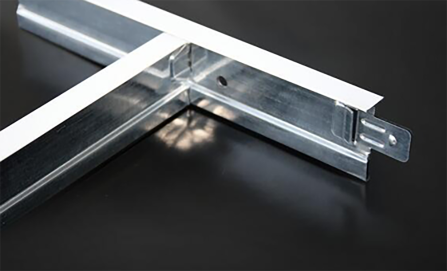Dec . 30, 2024 20:12 Back to list
Laminated Gypsum Panels for Enhanced Durability and Aesthetic Appeal in Construction
Exploring Laminated Gypsum Board Versatile Solutions for Modern Construction
Laminated gypsum board, often referred to as drywall or gypsum wallboard, is a versatile building material widely used in the construction and interior finishing of residential and commercial spaces. Its unique composition and properties make it an attractive option for walls, ceilings, and interior partitions. With advancements in technology, laminated gypsum boards have evolved, incorporating various features that cater to diverse construction needs.
Composition and Manufacturing Process
Laminated gypsum board consists of a core made from gypsum, a naturally occurring mineral, sandwiched between two layers of heavy paper or fiberglass mats. The manufacturing process involves mixing the gypsum with water, additives, and glass fibers to enhance its strength and durability. This mixture is then pressed between the paper sheets and dried to create a solid panel. The laminated surface provides additional resilience, making it resistant to moisture, fire, and impact.
Types of Laminated Gypsum Board
Depending on the intended use, laminated gypsum boards come in several varieties
1. Standard Boards These are commonly used for interior walls and ceilings in residential buildings. They are easy to install and finish, making them popular among contractors.
2. Moisture-Resistant Boards Ideal for areas exposed to high humidity, such as bathrooms and kitchens, these boards have a special water-resistant coating that prevents mold and mildew growth.
3. Fire-Resistant Boards Classified as Type X boards, these are designed to provide enhanced fire protection. They contain special additives that delay the spread of flames, making them suitable for commercial buildings and areas requiring fire safety compliance.
laminated gypsum board

4. Impact-Resistant Boards This type is reinforced with additional fiberglass and is used in high-traffic areas to withstand impacts, reducing the likelihood of dents and damage.
Benefits of Using Laminated Gypsum Board
Laminated gypsum boards offer numerous advantages in construction
- Ease of Installation Their lightweight nature makes them easy to handle, cut, and install. This ease reduces labor time and costs on building projects.
- Sustainability Gypsum is a natural material, and many manufacturers utilize eco-friendly practices in their production. Also, laminated gypsum boards can contribute to green building certifications.
- Acoustic Properties Gypsum boards have excellent sound insulation properties, making them ideal for creating quiet environments in homes and offices.
- Design Flexibility They can be finished with a variety of textures and paint, allowing for creative interior designs that can match any aesthetic.
Conclusion
Laminated gypsum board stands out as a staple material in modern construction, providing a balance between functionality, durability, and aesthetic appeal. Its diverse types cater to specific needs, whether it be moisture-rich areas, fire safety compliance, or resistance to impacts. As building practices continue to evolve, the reliance on such versatile materials is likely to increase, affirming laminated gypsum board’s role in shaping efficient, sustainable, and stylish interiors. Whether you are a contractor, architect, or homeowner, understanding the advantages of laminated gypsum boards can significantly enhance your construction projects.
-
Durable Ceiling T Grid Systems | Easy InstallationNewsAug.29,2025
-
PVC Gypsum Ceiling: Durable, Laminated Tiles for Modern SpacesNewsAug.28,2025
-
Pvc Gypsum Ceiling Is DurableNewsAug.21,2025
-
Mineral Fiber Board Is DurableNewsAug.21,2025
-
Ceiling Tile Clip Reusable DesignNewsAug.21,2025
-
Ceiling T Grid Modular DesignNewsAug.21,2025







